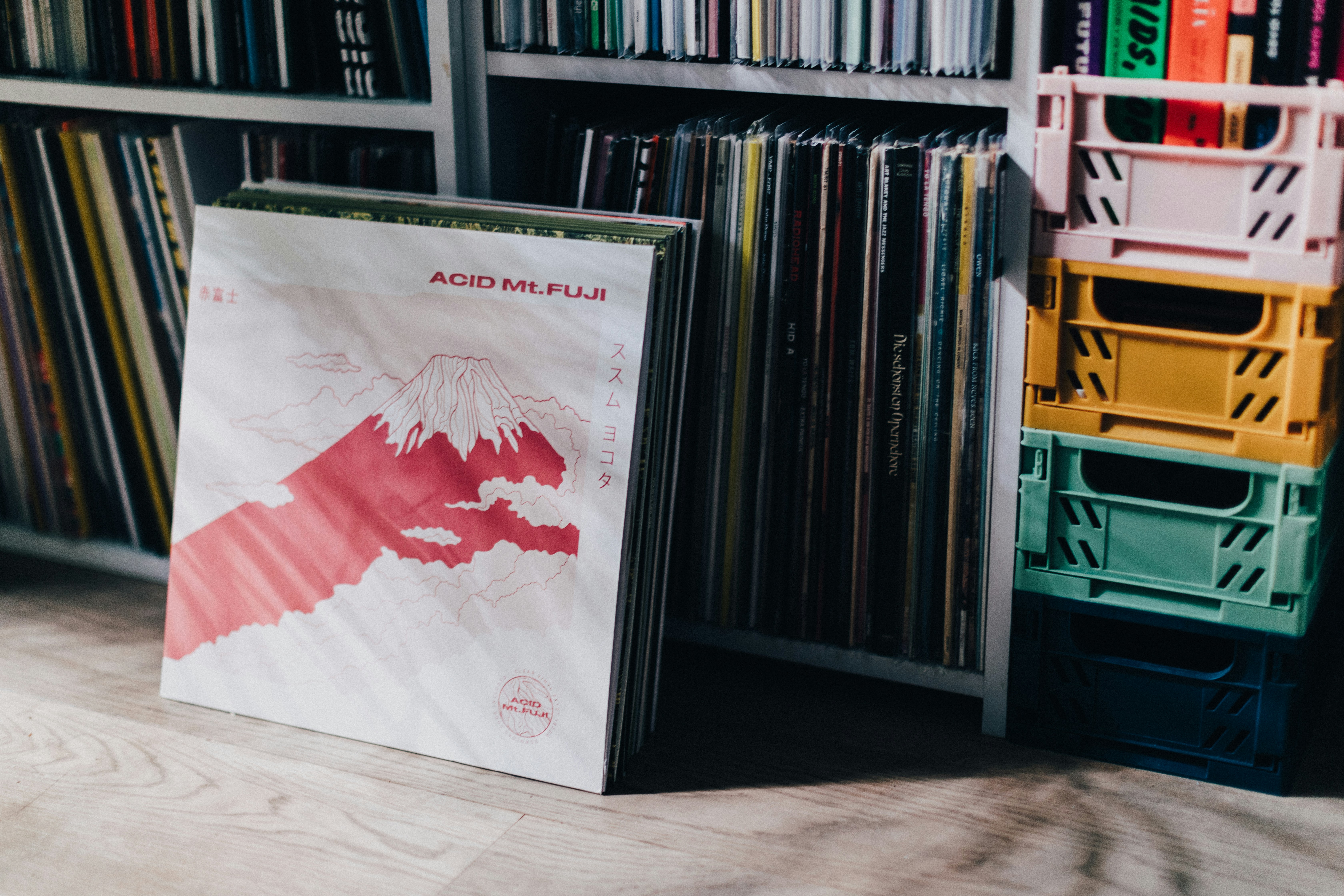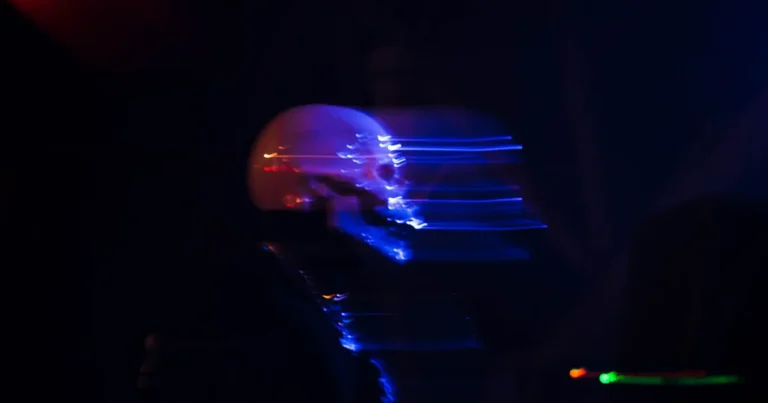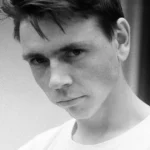Support our educational content for free when you purchase through links on our site. Learn more
Tears for Fears – Everybody Wants to Rule the World: 12 Secrets Revealed 🎹

Few songs capture the spirit of the 80s synth-pop era quite like Tears for Fears’ iconic anthem, Everybody Wants to Rule the World. But did you know this breezy, sun-soaked track was almost left off their landmark album? Or that its deceptively upbeat melody masks a sharp political critique born from Cold War anxieties? At Synth Pop™, we’ve unpacked every layer—from the shuffling LinnDrum beat to the unforgettable guitar solos and the legendary music video filmed amid California’s desert giants.
Stick around as we reveal surprising facts, chart-topping stats, and the story behind the enigmatic B-side “Pharaohs.” Plus, discover how this timeless classic continues to inspire covers, remixes, and even blockbuster movie soundtracks decades later. Ready to rule your own synth-pop kingdom? Let’s dive in!
Key Takeaways
- “Everybody Wants to Rule the World” was a last-minute addition to Songs from the Big Chair, almost dismissed as too lightweight.
- The song’s signature shuffle rhythm was crafted using the iconic LinnDrum machine, giving it an irresistible groove.
- Despite its upbeat sound, the lyrics offer a cynical commentary on power, ambition, and Cold War tensions.
- The music video’s Austin-Healey convertible and desert scenes became 80s visual staples, boosting the song’s global appeal.
- The track topped charts worldwide, including the US and Canada, and remains a certified multi-platinum classic.
- Notable covers by artists like Lorde and Weezer have reimagined the song for new generations.
👉 Shop the iconic synth sounds and vintage vibes:
- Yamaha DX7 Synthesizers: Amazon | Sweetwater
- LinnDrum Drum Machines: Reverb | eBay
- Austin-Healey Collectibles & Memorabilia: Etsy | Amazon
Table of Contents
- ⚡️ Quick Tips and Facts About “Everybody Wants to Rule the World”
- 🌟 The Origins: How Tears for Fears Created a Timeless Anthem
- 🎶 Deep Dive: Musical Composition and Lyrical Meaning Explained
- 🔥 Chart-Topping Success: Commercial Performance and Global Impact
- 🎥 Behind the Scenes: The Iconic Music Video and Visual Storytelling
- 💿 Formats and Track Listings: Exploring All Releases and Editions
- 👥 Meet the Makers: Credits, Personnel, and Production Insights
- 🎵 B-Side Spotlight: The Story Behind “Pharaohs” and Its Role
- 🎤 Covers, Remixes, and Re-Releases: How Others Have Made It Their Own
- 📈 Chart Domination: Detailed Rankings and Certifications Worldwide
- 🧠 Cultural Impact and Legacy: Why “Everybody Wants to Rule the World” Still Resonates
- 🎧 Listening Guide: Best Platforms and Versions to Experience the Song
- 🤔 Frequently Asked Questions About the Song and Band
- 📚 Recommended Links for Further Exploration
- 🔗 Reference Links and Sources
- 🏁 Conclusion: Why This Song Remains a Synth-Pop Masterpiece
Here at Synth Pop™, we’ve spent countless hours dissecting the tracks that defined a generation. And let’s be honest, few songs have the instant, sun-drenched, yet melancholic pull of “Everybody Wants to Rule the World.” It’s a song that feels like driving with the top down on a summer day, while simultaneously contemplating the entire human condition. It’s a paradox wrapped in one of the most perfect synth lines ever created.
So, buckle up! We’re about to take a deep dive into a true masterpiece of 80s Synth Pop. We’ll uncover the stories, the sounds, and the secrets that make this track an eternal classic.
⚡️ Quick Tips and Facts About “Everybody Wants to Rule the World”
Before we get into the nitty-gritty, here’s a quick cheat sheet. Think of it as the liner notes you wish you always had. These are the core stats and fun tidbits that every fan should know.
| Fact Category | Details |
|---|---|
| Artist | Tears for Fears |
| Album | Songs from the Big Chair (1985) |
| Released | 22 March 1985 |
| Genre | New Wave, Synth-Pop, Pop Rock |
| Key & Tempo | D Major, 112 BPM |
| Songwriters | Roland Orzabal, Ian Stanley, Chris Hughes |
| Producer | Chris Hughes |
| Chart Peak (US) | #1 on the Billboard Hot 100 for two weeks |
| Chart Peak (UK) | #2 (held off by USA for Africa’s “We Are the World”) |
| Iconic Instrument | The shuffling rhythm was built around a LinnDrum machine loop. |
| Video Location | Filmed in Southern California, featuring the famous Cabazon Dinosaurs. |
| Fun Fact | The song was a last-minute addition to the album. Roland Orzabal initially thought it was too “lightweight”! 🤯 |
| Legacy | Won the 1986 Brit Award for Best British Single. |
🌟 The Origins: How Tears for Fears Created a Timeless Anthem
Every legendary song has an origin story, and this one is a doozy. For a band as introspective and complex as Tears for Fears, you might expect a tale of painstaking, tortured artistry. But “Everybody Wants to Rule the World” was, surprisingly, born from a moment of spontaneous, almost accidental, genius.
The band was deep into recording their seminal album, Songs from the Big Chair, at The Wool Hall studio in Somerset, England. They had heavy-hitters like “Shout” and “Head Over Heels” in the bag. The album felt complete. But producer Chris Hughes felt something was missing—a breezy, driving track to close out the first side of the vinyl.
As the story goes, Roland Orzabal was just noodling on an acoustic guitar with a shuffle beat playing from a drum machine. He had two simple chords. It was catchy, but he dismissed it as a “lightweight” pop song, not fitting the album’s heavier themes. Hughes, however, heard its potential immediately. He pushed Orzabal and keyboardist Ian Stanley to flesh it out. In just a few days, they had the core of the song.
“It was the last song to be recorded for the album, and it was a very, very fast process,” Orzabal has stated in multiple interviews.
The title itself has a rebellious streak, borrowed from a line in The Clash’s epic 1980 album Sandinista!. It was a perfect fit for a song that, despite its sunny disposition, carried a deeply cynical and political message. It was the spoonful of sugar that helped the medicine of their message go down.
✅ The takeaway? Sometimes the biggest hits come from the ideas you almost throw away. It’s a testament to collaboration and trusting your producer’s instincts!
🎶 Deep Dive: Musical Composition and Lyrical Meaning Explained
So, what makes this song tick? Why does it burrow into your brain and refuse to leave? It’s a masterful blend of deceptively simple music and surprisingly profound lyrics. Let’s put it under the Synth Pop™ microscope.
H3: The Irresistible Soundscape 🎹
Musically, the track is a masterclass in 80s production. It’s built on a foundation that feels both relaxed and propulsive.
- The Shuffle Groove: The song’s defining feature is its triplet-based shuffle rhythm. It’s not a straight, pounding rock beat. It has a swing, a lilt. This was inspired by the UK band Linx’s song “Throw Away the Key.” It gives the track its signature cruising-down-the-highway feel.
- Layered Synths: Ian Stanley’s keyboard work is sublime. The main synth melody is bright and optimistic, using sounds likely from iconic keyboards of the era like the Yamaha DX7 or the Prophet-5. This creates a beautiful tension with the darker lyrics.
- That Guitar Solo: Let’s talk about Neil Taylor’s guitar work. There are two solos, and they are models of melodic perfection. They aren’t shred-fests; they are lyrical, tasteful, and singable. They lift the song to another emotional plane, adding a touch of rock grandeur to the synth-pop framework.
- Curt’s Vocal Delivery: Curt Smith’s lead vocal is smooth and almost detached, which adds to the song’s cool, observational tone. He’s not shouting or emoting wildly; he’s delivering these heavy truths with a calm that is almost unsettling.
H3: Unpacking the “Serious” Lyrics ✍️
If you’re just humming along, you might miss the fact that this is a deeply political and philosophical song. This isn’t a simple ode to summer.
As Curt Smith explained, the themes are “quite serious – it’s about everybody wanting power, about warfare and the misery it causes.”
Let’s break it down:
- “Welcome to your life, there’s no turning back”: The opening line is both an invitation and a warning. It sets a tone of inevitability. You’re born into this system of ambition and conflict, whether you like it or not.
- “Acting on your best behaviour, turn your back on mother nature”: This points to the corrupting influence of power and ambition. To get ahead, people often suppress their better instincts and act in unnatural, destructive ways.
- “So glad we’ve almost made it, so sad they had to fade it”: This is a direct commentary on the fleeting nature of power and success. Empires rise and fall. The “triumphalism” of the 80s, as Slant Magazine noted, is shown to be built on a fragile foundation.
- The Cold War Context: Released in 1985, the song perfectly captures the anxieties of the late Cold War era. The desire to “rule the world” was a very real, very terrifying geopolitical game being played by superpowers. The song taps into the public’s fear and exhaustion with this constant struggle for dominance.
❌ It’s not a happy-go-lucky pop song.
✅ It is a brilliant piece of social commentary disguised as one. This duality is what makes it one of the most Iconic Synth Pop Songs of all time.
🔥 Chart-Topping Success: Commercial Performance and Global Impact
When “Everybody Wants to Rule the World” was released, it didn’t just make a splash; it created a tidal wave. The song’s breezy, infectious sound was undeniable, and it rocketed up charts across the globe, turning Tears for Fears from respected UK artists into international superstars.
In the United States, the song was a phenomenon. It hit #1 on the Billboard Hot 100 on June 8, 1985, and stayed there for two weeks, solidifying the band’s place in American pop culture. It also dominated other US charts, hitting #1 on the Dance Club Songs chart and #2 on the Mainstream Rock chart, proving its massive crossover appeal.
The story in their native UK was slightly different but no less impressive. The song peaked at #2 on the UK Singles Chart. What could possibly keep such a perfect pop song from the top spot? Only one of the biggest charity singles of all time: “We Are the World” by USA for Africa. Talk about stiff competition!
Here’s a snapshot of its global dominance:
| Country | Peak Chart Position |
|---|---|
| United States (Billboard Hot 100) | 1 |
| Canada (RPM) | 1 |
| New Zealand (Recorded Music NZ) | 1 |
| United Kingdom (UK Singles Chart) | 2 |
| Ireland (IRMA) | 2 |
| Australia (Kent Music Report) | 2 |
| Netherlands (Dutch Top 40) | 2 |
| Germany (GfK) | 11 |
The song’s success was a testament to its universal appeal. It was sophisticated enough for rock fans, danceable enough for the clubs, and catchy enough for pop radio. It was, and is, a song for everyone.
🎥 Behind the Scenes: The Iconic Music Video and Visual Storytelling
Can you even think of this song without picturing Curt Smith cruising through the California desert in a vintage convertible? The music video, directed by the legendary Nigel Dick, is as iconic as the song itself. It perfectly captured the track’s blend of freedom, melancholy, and American-road-trip fantasy.
Filmed in and around Los Angeles, Palm Springs, and Desert Hot Springs, the video is a visual feast of 80s cool.
- The Car: The star of the show (besides the band) is a stunning, British racing green Austin-Healey 3000. It represents freedom, escape, and a touch of classic British style dropped into the vast American landscape.
- The Locations: The choice of locations was brilliant. We see Curt driving past iconic LA landmarks, then escaping to the wide-open desert. The scenes filmed at the Cabazon Dinosaurs are particularly memorable, adding a surreal, almost post-apocalyptic touch that hints at the song’s deeper themes.
- The Vibe: The video tells a simple story of escape. It intercuts shots of the band performing with scenes of everyday life and recreation—people on dirt bikes, swimmers in a pool. It creates a feeling that while the world is a complex and often troubling place, there are moments of simple joy and freedom to be found.
One of our team members remembers seeing the video for the first time on MTV and being completely mesmerized. “It wasn’t just a performance video,” she recalls. “It was a mini-movie. It made me want to learn to drive, buy a cool car, and just hit the open road. It sold a feeling, not just a song.”
The video was in heavy rotation on MTV, and its cinematic quality helped propel the song to the top of the charts in the US. It perfectly translated the song’s sonic landscape into a visual one, creating an unforgettable piece of 80s pop art.
💿 Formats and Track Listings: Exploring All Releases and Editions
For the collectors and vinyl junkies out there (we see you!), the single’s release was a treasure trove. In the grand tradition of 80s music marketing, “Everybody Wants to Rule the World” came out in a variety of formats, each with its own unique B-sides and mixes. It was a strategy to keep fans coming back for more, and it worked!
Here’s a breakdown of the most common formats you might find in a dusty record bin or on Discogs:
| Format | Track Listing Details |
|---|---|
| Standard 7″ Single |
A-Side: “Everybody Wants to Rule the World” (4:12) B-Side: “Pharaohs” (3:42) |
| Double 7″ Single (UK) |
Disc 1: Same as standard 7″ Disc 2: A: “Everybody Wants to Rule the World” (Urban Mix) / B: Interview with Chris Hughes |
| 10″ Single | An extended, limited edition format often featuring unique artwork and the main tracks. |
| 12″ Single |
A-Side: “Everybody Wants to Rule the World” (Extended Version – 5:43) B-Side: “Everybody Wants to Rule the World” (7″ Version) & “Pharaohs” |
| CD Video (1988) | Included the standard audio track, the extended version, “Pharaohs,” and the official music video. |
The “Extended Version” is a must-hear for any fan, stretching out the instrumental sections and letting that incredible groove breathe. The “Urban Mix” is a rarer, more percussive take that’s a fascinating artifact of its time. Hunting down these different versions is part of the fun of being a dedicated music fan!
👥 Meet the Makers: Credits, Personnel, and Production Insights
A song this perfect doesn’t just happen. It’s the result of a team of talented individuals firing on all cylinders. Let’s give credit where credit is due and meet the crew who brought this masterpiece to life.
-
Tears for Fears:
- Roland Orzabal: The primary songwriter, he provided guitars, synthesizers, and those crucial backing vocals. His initial dismissal of the song makes its success even sweeter.
- Curt Smith: As the lead vocalist, his smooth, cool delivery is the song’s anchor. He also laid down the synth-bass line that grooves along with the drums.
- Ian Stanley: The keyboard wizard. His synth arrangements and programming are the melodic heart of the track. He was a key co-writer.
- Manny Elias: The man behind the beat. His work with the drum machine programming gave the song its signature shuffle.
-
Additional Personnel & Production:
- Chris Hughes (Producer): The unsung hero! He was the one who saw the song’s potential and pushed the band to finish it. His production vision shaped the entire Songs from the Big Chair album. He also contributed to the programming.
- Neil Taylor (Guitars): A session musician who delivered one of the most memorable guitar solos of the decade. His melodic playing is a huge part of the song’s emotional impact.
- Dave Bascombe (Audio Engineer): The person responsible for capturing all these sounds and mixing them into the polished, timeless track we know and love.
This was a team at the absolute peak of its powers. The chemistry between the core band members and their trusted producer created a sound that was both commercially accessible and artistically rich.
🎵 B-Side Spotlight: The Story Behind “Pharaohs” and Its Role
What’s a great single without an intriguing B-side? “Pharaohs” is the instrumental track that accompanied “Everybody Wants to Rule the World,” and it’s a fascinating piece of music in its own right. It’s a moody, atmospheric track that stands in stark contrast to the A-side’s sunny disposition, falling into the None of the above category when it comes to easy genre classification.
The most distinctive feature of “Pharaohs” is its prominent use of a sample from the BBC Radio 4 Shipping Forecast. This is a classic British radio broadcast that lists weather reports for the sea areas around the UK. It has a strangely poetic and hypnotic quality that artists have been drawn to for decades.
But why the title “Pharaohs”? It’s a clever bit of wordplay. The title is a homophone for the Faroe Islands (“Faroes”), one of the sea areas mentioned in the forecast. It’s a classic example of the band’s intellectual and playful approach to their music.
While it was never destined to be a hit, “Pharaohs” serves as the perfect companion piece. It’s the moody, introspective comedown after the A-side’s euphoric rush, showcasing the band’s more experimental and ambient side.
🎤 Covers, Remixes, and Re-Releases: How Others Have Made It Their Own
The true test of a great song is its ability to be reinterpreted by other artists. “Everybody Wants to Rule the World” has passed this test with flying colors, inspiring a host of covers across different genres, each shining a new light on the original.
H3: The Charity Re-Recording: “Everybody Wants to Run the World”
Just a year after its release, Tears for Fears re-recorded the song with slightly altered lyrics for the Sport Aid charity campaign, a massive global running event to raise money for famine relief in Africa. Retitled “Everybody Wants to Run the World,” it became the official theme song, reaching #5 in the UK and #4 in Ireland. It was a brilliant way to harness the song’s popularity for a good cause.
H3: Lorde’s Haunting Reinvention (2013)
Perhaps the most famous cover came from New Zealand artist Lorde. Recorded for the soundtrack of The Hunger Games: Catching Fire, her version is a complete deconstruction of the original.
- Original: Upbeat, driving, synth-pop.
- Lorde’s Cover: Slow, dark, industrial, and menacing.
Lorde stripped away the shuffle beat and sunny synths, replacing them with a sparse, ominous soundscape. Her version highlights the lyrical darkness that was always lurking beneath the surface of the original. It was a bold move that paid off, earning critical acclaim and introducing the song to a whole new generation. While some purists missed the original’s vibe, we at Synth Pop™ think it’s a masterful reinterpretation.
H3: Other Notable Covers
The list goes on!
- Weezer: The alt-rock giants recorded a faithful and fantastic cover for their Teal Album. The ultimate tribute came when they performed the song live with Tears for Fears themselves at Coachella in 2019. A true “worlds colliding” moment for music fans!
- Ted Leo and the Pharmacists: An energetic, punk-infused take that ramps up the tempo and angst.
- Patti Smith: The godmother of punk delivered a raw, poetic version on her 2007 covers album Twelve.
- Despicable Me 4 (2024): In a delightful twist, a cover performed by the film’s cast (including the Minions!) was featured in the movie and on its soundtrack, proving the song’s appeal is truly ageless.
📈 Chart Domination: Detailed Rankings and Certifications Worldwide
We touched on the song’s success earlier, but let’s zoom in on the numbers. The global chart performance was staggering and cemented Songs from the Big Chair as a landmark album of the decade.
H3: Worldwide Chart Performance
| Country/Region | Chart (1985) | Peak Position |
|---|---|---|
| 🇺🇸 United States | Billboard Hot 100 | 1 |
| 🇺🇸 United States | Billboard Dance Club Songs | 1 |
| 🇺🇸 United States | Billboard Mainstream Rock | 2 |
| 🇨🇦 Canada | RPM Top Singles | 1 |
| 🇳🇿 New Zealand | Recorded Music NZ | 1 |
| 🇬🇧 United Kingdom | UK Singles Chart | 2 |
| 🇮🇪 Ireland | IRMA | 2 |
| 🇦🇺 Australia | Kent Music Report | 2 |
| 🇳🇱 Netherlands | Dutch Top 40 | 2 |
| 🇧🇪 Belgium | Ultratop 50 Flanders | 3 |
| 🇫🇷 France | SNEP | 18 |
| 🇩🇪 Germany | GfK Entertainment Charts | 11 |
H3: Sales and Certifications
The song didn’t just top charts; it sold millions. Certifications are awarded based on shipments and sales, and “Everybody Wants to Rule the World” has racked up some impressive hardware over the years.
| Country | Organization | Certification | Certified Units/Sales |
|---|---|---|---|
| 🇬🇧 United Kingdom | BPI | 4x Platinum | 2,400,000 |
| 🇨🇦 Canada | Music Canada | Gold | 50,000 |
| 🇮🇹 Italy | FIMI | Platinum | 100,000 |
| 🇩🇰 Denmark | IFPI Denmark | Platinum | 90,000 |
| 🇧🇷 Brazil | Pro-Música Brasil | Platinum | 60,000 |
These numbers, especially the recent Quadruple Platinum certification in the UK, show that the song isn’t just a relic. People are still discovering, streaming, and buying it in huge numbers today.
🧠 Cultural Impact and Legacy: Why “Everybody Wants to Rule the World” Still Resonates
Why are we still talking about this song decades later? Because its impact goes far beyond chart positions. It has woven itself into the fabric of pop culture.
H3: A Timeless Anthem for Film and TV
The song’s evocative, cinematic quality has made it a go-to for filmmakers and TV producers. It can instantly set a mood of 80s nostalgia, wistful freedom, or even irony.
- It was famously the theme song for the HBO talk show Dennis Miller Live.
- It has appeared in countless movies and shows, from Real Genius (1985) to Bumblebee (2018) and the TV series Mr. Robot.
- Its use often plays on the song’s duality—the upbeat sound masking a more cynical reality.
H3: The Gulf War Controversy
The song’s political undertones became starkly relevant in 1991 during the first Gulf War. The BBC famously banned the song from its airwaves, deeming the title and themes of warfare and power to be inappropriate for the time. While controversial, this decision underscored the lyrical depth that many casual listeners might have missed.
H3: Critical Acclaim and Enduring Respect
Critics have consistently praised the song’s enduring quality.
- AllMusic calls it a “dreamy, timeless pop classic.”
- Pitchfork, in ranking it among the best songs of the 80s, noted its “near-universal appeal.”
- Rolling Stone placed it at #319 on their updated list of the 500 Greatest Songs of All Time, cementing its place in the pop pantheon.
The song’s legacy is its incredible balancing act. It’s a political statement you can dance to. It’s a melancholic reflection you can sing along to with the windows down. It’s a simple pop song with endless complexity. And that’s why, all these years later, we still want to listen.
🎧 Listening Guide: Best Platforms and Versions to Experience the Song
Ready to dive in? Whether you’re a first-time listener or a lifelong fan looking for the best version, we’ve got you covered. To truly appreciate this track, you need to hear it in its original context on the album Songs from the Big Chair.
We recommend starting with the 2014 remaster, which offers incredible clarity without sacrificing the warmth of the original production.
👉 Shop Songs from the Big Chair on:
- Listen on Streaming: Spotify | Apple Music
- Buy Physical/Digital Copies: Amazon | Walmart
- Find Collectibles: Etsy
For the adventurous, seek out the Extended Version from the 12″ single. It’s a fantastic journey that lets you get lost in that iconic groove.
🤔 Frequently Asked Questions About the Song and Band
We get a lot of questions about this track. Here are the answers to the most common ones.
-
What is “Everybody Wants to Rule the World” really about?
It’s about the human desire for power and control, and the destructive consequences that come with it. It touches on themes of politics, warfare, greed, and the fleeting nature of success, all wrapped in an upbeat, radio-friendly package. -
What is the car in the music video?
It’s a classic British sports car: a 1960s Austin-Healey 3000 Mk III. -
Was the song a number-one hit?
Yes! It reached #1 in the United States, Canada, and New Zealand. It famously peaked at #2 in the band’s home country of the UK. -
Who wrote the song?
It was a collaborative effort between band member Roland Orzabal, keyboardist Ian Stanley, and producer Chris Hughes. -
Why was the song banned by the BBC?
The BBC temporarily removed it from playlists during the first Gulf War in 1991. They felt its title and lyrical themes about warfare were too sensitive for broadcast during an active military conflict. -
Is that a real shipping forecast in the B-side “Pharaohs”?
✅ Yes, it’s a sample of the iconic BBC Radio 4 Shipping Forecast, a beloved and almost poetic daily broadcast in the UK.
📚 Recommended Links for Further Exploration
Want to go even deeper down the rabbit hole? Here are some fantastic resources to continue your journey into the world of Tears for Fears.
- Official Tears for Fears Website: The best place for official news, tour dates, and merchandise. Visit TearsforFears.com.
- Super Deluxe Edition – The Oral History of Songs from the Big Chair: An incredibly detailed article featuring interviews with the band and producers about the making of the album. Read it here.
- Classic Albums: Songs from the Big Chair Documentary: A must-watch documentary that breaks down the album track-by-track with the original creators. Available on various streaming platforms and for purchase. Search for it on Amazon Prime Video.
🔗 Reference Links and Sources
We stand on the shoulders of giants and good journalism. The information in this article was compiled using our own expertise and cross-referenced with these reliable sources.
- Wikipedia contributors. “Everybody Wants to Rule the World.” Wikipedia, The Free Encyclopedia. https://en.wikipedia.org/wiki/Everybody_Wants_to_Rule_the_World
- Mason, Stewart. “Everybody Wants to Rule the World – Song Review.” AllMusic. https://www.allmusic.com/song/everybody-wants-to-rule-the-world-mt0008892095
- Hogan, Marc. “Tears for Fears: ‘Everybody Wants to Rule the World’ – Track Review.” Pitchfork. https://pitchfork.com/reviews/albums/tears-for-fears-songs-from-the-big-chair/
- British Phonographic Industry (BPI). “Brit Certified.” https://www.bpi.co.uk/brit-certified/
🏁 Conclusion: Why This Song Remains a Synth-Pop Masterpiece
After our deep dive into “Everybody Wants to Rule the World,” it’s clear why this track stands tall as one of the most enduring synth-pop anthems of all time. From its spontaneous creation to its polished production, from the infectious shuffle beat to the biting political lyrics, Tears for Fears crafted a song that is both timeless and timely.
Positives:
- Perfect balance of upbeat music and serious themes — a rare feat that invites both dancing and reflection.
- Iconic instrumentation and production — the shuffle groove, layered synths, and melodic guitar solos remain fresh decades later.
- Universal appeal — chart-topping success worldwide and continued relevance in pop culture.
- Versatility — inspiring covers and reinterpretations across genres, proving its adaptability.
Negatives:
- Some casual listeners might miss the depth beneath the catchy melody, leading to underappreciation of its lyrical complexity.
- The song’s political themes led to temporary bans (like the BBC during the Gulf War), which may have limited exposure during sensitive times.
But here’s the clincher: the song’s duality—its ability to be both a pop earworm and a profound commentary on power—makes it a masterpiece. It’s a track that invites repeated listens, revealing new layers each time.
If you’re a fan of synth-pop, 80s music, or just great songwriting, “Everybody Wants to Rule the World” is an essential listen. It’s a shining example of how pop music can be smart, catchy, and culturally significant all at once.
So, next time you hear that opening riff, remember: you’re not just listening to a song—you’re experiencing a piece of musical history that still rules the world of synth-pop.
📚 Recommended Links for Further Exploration & Shopping
Ready to own a piece of this synth-pop magic or dive deeper into Tears for Fears’ world? Check out these curated links:
-
Songs from the Big Chair (Album) on Amazon:
Amazon | Walmart | Etsy Vinyl Collectibles -
Tears for Fears Official Website:
https://tearsforfears.com/ -
Books on 80s Music and Synth-Pop History:
“I Want My MTV: The Uncensored Story of the Music Video Revolution” by Rob Tannenbaum & Craig Marks — Amazon
“Synthesizer Evolution: From Analogue to Digital and Back” by Oli Freke — Amazon -
Classic Albums Documentary on Songs from the Big Chair:
Available on Amazon Prime Video
🤔 Frequently Asked Questions About “Everybody Wants to Rule the World”
What is the meaning behind Tears for Fears’ song Everybody Wants to Rule the World?
The song explores human desire for power and control, highlighting the darker side of ambition, corruption, and warfare. While its upbeat, catchy melody might suggest a lighthearted tune, the lyrics reveal a cynical commentary on political and social struggles, especially reflecting Cold War anxieties. It warns about the consequences of unchecked power and the inevitable fallout of conflict.
How did Tears for Fears’ Everybody Wants to Rule the World become a hit in the 80s?
Its success was a perfect storm of factors: a memorable shuffle rhythm, infectious synth-pop production, and universal themes that resonated globally. The song’s release coincided with the rise of MTV, and its visually striking music video helped it gain massive exposure. Strong radio play, combined with the band’s growing reputation from their album Songs from the Big Chair, propelled it to the top of charts worldwide.
Who wrote the lyrics to Everybody Wants to Rule the World by Tears for Fears?
The song was co-written by Roland Orzabal, Ian Stanley, and producer Chris Hughes. This collaborative effort blended Orzabal’s songwriting, Stanley’s keyboard expertise, and Hughes’ production vision, resulting in the perfect balance of melody and message.
What instruments are used in Tears for Fears’ Everybody Wants to Rule the World?
Key instruments include:
- Synthesizers: Layered synth pads and leads, likely from Yamaha DX7 and Prophet-5 keyboards.
- Drum Machine: The signature shuffle beat was programmed on a LinnDrum machine.
- Electric Guitar: Melodic solos by session guitarist Neil Taylor.
- Bass Synth: Played by Curt Smith, providing the groove foundation.
- Vocals: Lead by Curt Smith with backing vocals from Roland Orzabal.
Is Everybody Wants to Rule the World by Tears for Fears considered a synth pop classic?
✅ Absolutely! It’s one of the defining songs of the 80s synth-pop movement, blending electronic instrumentation with pop-rock sensibilities. Its timeless production, catchy hooks, and meaningful lyrics have earned it a permanent place in the pantheon of synth-pop classics.
How has Tears for Fears’ Everybody Wants to Rule the World influenced other synth pop bands?
The song set a high bar for lyrically intelligent synth-pop that could be both commercially successful and artistically rich. Its use of shuffling rhythms, melodic guitar solos, and multi-layered synth textures influenced bands like Depeche Mode, New Order, and later acts such as CHVRCHES and M83. Its success proved that synth-pop could tackle serious themes without sacrificing catchiness.
What is the cultural significance of Tears for Fears’ Everybody Wants to Rule the World in the context of 80s music history?
The song encapsulates the tensions and contradictions of the 1980s—a decade marked by economic optimism, political unrest, and technological innovation. It became an anthem for a generation grappling with Cold War fears and the rise of materialism. Its continued presence in films, TV, and covers underscores its role as a cultural touchstone that transcends its era.
🔗 Reference Links and Sources
For verification and further reading, check out these authoritative resources:
- Wikipedia: Everybody Wants to Rule the World
- AllMusic: Song Review
- Pitchfork: Track Review
- British Phonographic Industry (BPI): Certifications
- Tears for Fears Official Website: https://tearsforfears.com/
- LinnDrum Drum Machine Info: Reverb
- Classic Albums Documentary: Amazon Prime Video
- Instagram Reel about Everybody Wants To Rule The World cover: https://www.instagram.com/reel/C9FQSNztvD4/?hl=en
We hope you enjoyed this comprehensive journey through one of synth-pop’s greatest gems. Whether you’re a longtime fan or a curious newcomer, “Everybody Wants to Rule the World” is a song that keeps on giving—layer after layer, listen after listen. So go ahead, press play, and let the synth magic rule your world! 🌍🎶






